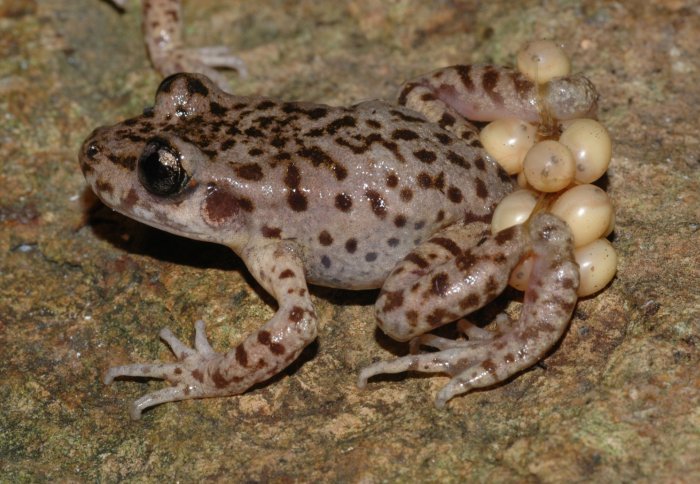Mallorcan midwife toads pave the way for fungal cure
by Kate Wighton

Mallorcan Midwife Toad
Research published today reveals the first-ever successful elimination of a fatal chytrid fungus in a wild amphibian.
This marks a major breakthrough in the fight against the disease, responsible for devastating amphibian populations worldwide.
The highly-infectious chytrid pathogen has severely affected over 700 amphibian species across the globe; driving population declines, and even species extinctions across five continents.
Results from the seven-year study show the first evidence of eradicating the chytrid pathogen affecting amphibians in their natural environment.
"This study provides proof that removal of this pathogen in wild populations can be achieved."
– Professor Matthew Fisher
Study Author
Published today in Biology Letters, the paper details the outcome of a project led by scientists from the Imperial College London, Zoological Society of London, and the National Museum of Natural History in Spain.
The study combined antifungal treatment of Mallorcan midwife toad tadpoles with environmental disinfection. The species earn their name from the fact the male of the species carries developing eggs on his back.
By using an antifungal to treat tadpoles, and a common laboratory decontaminant to sterilise the environment, researchers were able to clear infection from populations of the toad over the research period.
Professor Matthew Fisher, from Imperial’s School of Public Health, and one of the authors of the study said: "With these chytrids expanding their range, there is a real need for new measures to combat these emerging infections. This study provides proof that removal of this pathogen in wild populations can be achieved".
Article text (excluding photos or graphics) © Imperial College London.
Photos and graphics subject to third party copyright used with permission or © Imperial College London.
Reporter
Kate Wighton
Communications Division